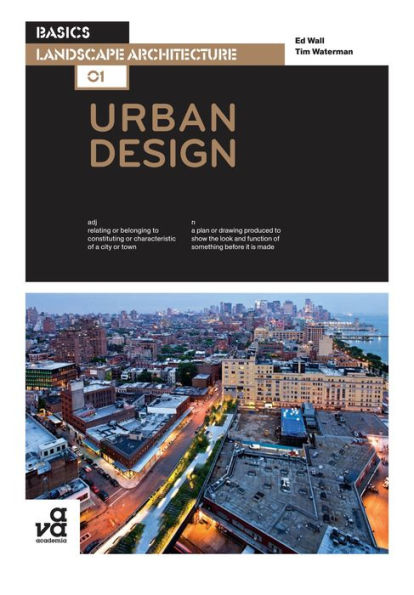Basics Landscape Architecture 01: Urban Design
Basics Landscape Architecture 01: Urban Design seeks to define and describe the role played by landscape architecture in urban design, an interdisciplinary practice that is concerned with defining the form of human settlements.
It provides a brief history and definition of urban design and the roles of the various professions involved.
Urban Design looks at the elements of urban form and the importance of contextual details, from the scale of the city and its region to the importance of materials.
The text uses case studies to explore the philosophies and methodologies of urban design and to explain the importance of of urban design to landscape architecture and, in turn, the importance of landscape architecture to urban design.
1131306996
It provides a brief history and definition of urban design and the roles of the various professions involved.
Urban Design looks at the elements of urban form and the importance of contextual details, from the scale of the city and its region to the importance of materials.
The text uses case studies to explore the philosophies and methodologies of urban design and to explain the importance of of urban design to landscape architecture and, in turn, the importance of landscape architecture to urban design.
Basics Landscape Architecture 01: Urban Design
Basics Landscape Architecture 01: Urban Design seeks to define and describe the role played by landscape architecture in urban design, an interdisciplinary practice that is concerned with defining the form of human settlements.
It provides a brief history and definition of urban design and the roles of the various professions involved.
Urban Design looks at the elements of urban form and the importance of contextual details, from the scale of the city and its region to the importance of materials.
The text uses case studies to explore the philosophies and methodologies of urban design and to explain the importance of of urban design to landscape architecture and, in turn, the importance of landscape architecture to urban design.
It provides a brief history and definition of urban design and the roles of the various professions involved.
Urban Design looks at the elements of urban form and the importance of contextual details, from the scale of the city and its region to the importance of materials.
The text uses case studies to explore the philosophies and methodologies of urban design and to explain the importance of of urban design to landscape architecture and, in turn, the importance of landscape architecture to urban design.
20.24
In Stock
5
1

Basics Landscape Architecture 01: Urban Design
184
Basics Landscape Architecture 01: Urban Design
184
20.24
In Stock

Product Details
| ISBN-13: | 9781350034648 |
|---|---|
| Publisher: | Bloomsbury Publishing |
| Publication date: | 11/02/2017 |
| Series: | Basics Landscape Architecture |
| Sold by: | Barnes & Noble |
| Format: | eBook |
| Pages: | 184 |
| File size: | 120 MB |
| Note: | This product may take a few minutes to download. |
About the Author
From the B&N Reads Blog
